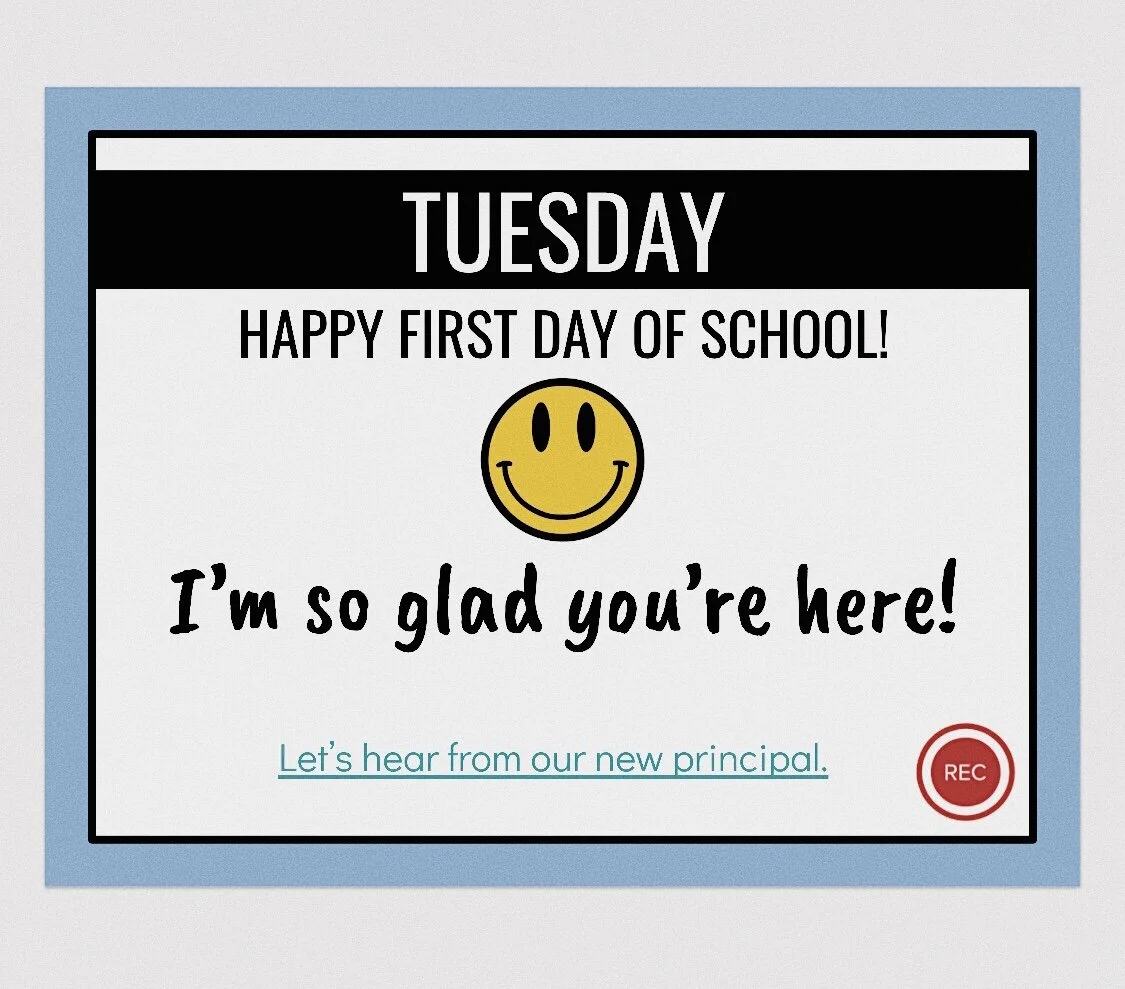First Day of School
Today was the first day of my eighth year of teaching and, unlike other first days of school, this one was on the computer. Like many schools this fall, my school system decided to start the school year virtually. Although I agree it was the best call to keep everyone safe and healthy, I was still mourning the fact that this school year would just feel “different.” (I know I was not alone in feeling this way.) However, over the past few weeks I’ve been able to (slowly) shift my mindset and mentally pump myself up for a virtual start to the school year.
Over the past eight years, I’ve naturally become more confident when it comes to preparing myself for the first day of school. I still get those “first day jitters,” but I think all teachers do. In my experience, the first day (and really the first week) is more about establishing your classroom community than actually teaching content.
For me, I want my classroom to be a place where students feel safe and comfortable. A place where they feel their voices matter and their feelings are valid. And a place where they are excited to learn and ready to foster more independence. Getting my classroom to this place takes time and effort and practice, but it all starts on the very FIRST day of school. The very first day is where you begin to “lay the foundation” for the year ahead with your new group of students. (Full transparency: this WILL take longer over the computer, but it can still happen.)
So, regardless of whether your first day is in person, or through a computer screen like mine, here are three things you can do to “Lay the Foundation” and establish a kind, caring, and respectful classroom community.
Know your students' names BEFORE the first day of school.
When your students enter your classroom (or join your virtual classroom) for the first time, you want them to feel like they belong and that they are a valued member of your classroom community. In my experience, students feel special and “seen” when their teacher knows their name right away.* (Even more so when their teacher pronounces their name correctly, so make sure you ask someone or reach out to their teacher from last year!)
One way I practice learning names before the school year is by looking my students up on the school database which usually has pictures of each student. I like to copy and paste the pictures of each of my students onto a document I keep in Google Drive where I like to write notes about each student as the year progresses. Some of the notes include how to pronounce their name, if they go by a different name, allergies, concerns, struggles, etc.
*I teach elementary school and have had anywhere from 14-42 names to learn each year. I know there are many teachers out there who work with hundreds of students, and I understand this would be unrealistic in your case.
Be kind, but firm, when setting expectations. (And start on the very first day.)
Many teachers (including myself my first year) want their students to like them right off the bat and don’t want to seem “mean.” But let me tell you, 1) It’s easier to set firm expectations and then “loosen the reigns” over time! And 2) Children like when they know what’s expected of them. They like routine and structure and often thrive when they know all of these things. In my opinion, it’s definitely worth setting firm expectations right from the get go. When you kindly set expectations high, it often leads to a mutual respect and understanding between teacher and students. It also helps you to run a smooth classroom!
Plan activities that will make ALL students feel successful.
Your students will enter your classroom (or virtual classroom) on the first day with a wide range of abilities. This year, for example, I have some students who still don’t know all of their letters/letter sounds, and other students who can read and comprehend third grade chapter books. Because I know this, I’m intentional about planning activities that allow all students to feel successful. (This is especially important when you’re teaching virtually, and you can’t be “right there” to help your struggling students.)
For example, my goal today (the first day of school) was for everyone to practice taking turns and muting/unmuting their microphone while sharing about some of their favorite things. I had a circle visual of the order we would be sharing, as well as visuals for what we would be sharing, as well as 1-2 sentence frames students could use to help them share their ideas. (I also told students that they didn’t HAVE to use the sentence frames, as this can be frustrating for students who want to share a more creative answer). I also intentionally had myself and “model” students share first so my ELL (English Language Learner) students could hear many of their classmates share and become more confident with what to say when it was their turn.
I hope you had a great first day of school, regardless of whether you were in person or teaching virtually. Remember, we can do hard things!
